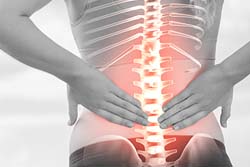Most sciatic nerve pain resolves itself without requiring medical attention. However, if the pain does not abate permanent nerve damage can occur. It is important to get sports injury treatment if you are experiencing hip pain or loss of feeling in the leg.
Chiropractic adjustment or spinal manipulation is one form of therapy a chiropractor uses to treat sciatica. Treatments can also include using hot and cold packs on the affected areas. Cold packs can provide temporary relief. Alternating cold and hot packs are another methods used to alleviate hip and leg pain. Over-the-counter pain relief from medications such as ibuprofen and naproxen sodium can reduce inflammation and provide temporary respite from sciatica pain.
